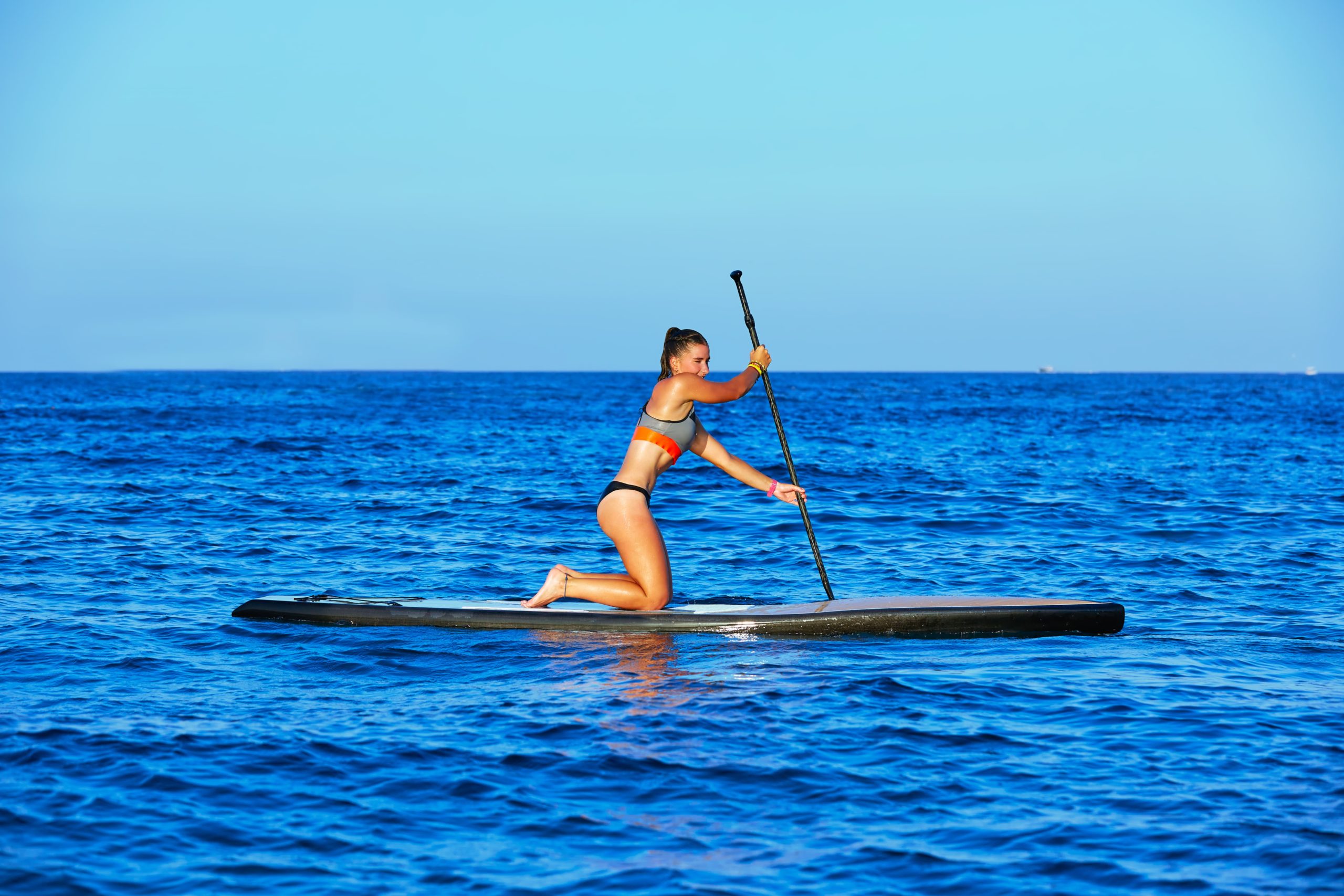
Sooner or later, the weather is going to turn on you and you’re going to be out on the water struggling with the wind. Most paddleboards will still perform well with light wind, or wind speeds in the 1 to 5 mph range. Wind speeds of 6 to 10 mph will affect lighter boards, while winds speeds in excess of 10 mph will lead to a significant performance decrease of almost all paddleboards.
Fortunately, there are a few things that you can do to maintain control of your paddleboard and either wait for the wind to die down or get back to shore. Here are our top tips on paddling into the wind.
Tip #1: Lowering your Center of Gravity.
When you lower your center of gravity, you not only minimize the total windage on your board and body, but will also improve the stability and control of your paddleboard. Bend your knees in moderate winds, or even consider getting on your knees if you find a crouched position too difficult. If it is a sudden yet extremely strong wind, you can also get on your belly and paddle with your arms. Being on your belly will be slow going, but as most of the wind will be passing overhead you’ll be able to safely get back to shore by doing this.
Tip #2: Adjust Your Grip + Focus on slower, stronger strokes.
As you’re paddling, you’ll want to first adjust where you grip your paddle, moving both hands a few inches down the length of the shaft. Doing so will naturally cause you to plant your paddle further into the water, causing you to paddle with a stronger, more powerful stroke. This will also cause you to slow down and can feel uncomfortable, but it will ensure you can still maintain a steady course against the wind.
Tip #3: Make sure you put on your PFD and leash.
Paddling into the wind can be tricky, and most paddlers will eventually fall off from sudden gusts or due to the unresponsiveness of their board. We always recommend going out with a PFD so that you’ll be safe floating in the water if you fall off. We also recommend having a leash on your paddleboard as well, and to make sure that you put it on once the wind picks up. If you fall off on a windy day, your paddleboard may quickly float out of your reach, forcing you to swim to shore and potentially even lose SUP. A leash will keep your paddleboard close no matter how windy it is, with many leashes having coils that prevent whiplash as well.
Conclusion: Check the Weather before you go!
We all know that the weatherman won’t be accurate all of the time, but checking even a few hours before you head out should give you a pretty good idea of what to expect when you go out. The best tip we have for paddling into the wind is to take steps to avoid it as much as you can! Even moderate winds can make a normally easy trip back to shore an exhausting journey, so knowing when to head back and avoid the wind entirely is our best recommendation. However, if you’re still on the water when the wind picks up, we hope that the tips and tricks we’ve recommended above will help you get to where you want to go safely.
Thank you so much for reading! Be sure to leave a comment below or send us an email if you have any other questions, suggestions, or thoughts. Otherwise, we hope you have a blast paddleboarding!
SupBoardGuide
Latest posts by SupBoardGuide (see all)
- Best Electric Pumps for Inflatable SUPs - April 2, 2024
- Starboard Inflatable Stand Up Paddle Boards (iSUPS) Review – 2024 - March 26, 2024
- RedPaddleCo 12′ Compact iSUP Review – 2024 - February 23, 2024
